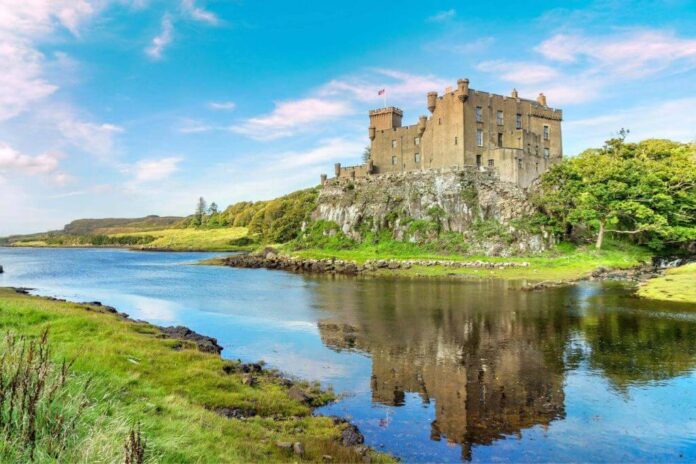The Clan MacLeod of MacLeod has its ancestral home at Dunvegan Castle. It is the oldest continually occupied castle in Scotland and boasts a magnificent position on the northwest coast of the Isle of Skye, on the brink of a sea loch. Dunvegan is a must-see if you’re thinking about visiting the Hebrides and the Isle of Skye. Before you leave, be sure to read the following.
1. One of the most significant Highland clans is the MacLeods
One of the most significant Highland clans, the MacLeods, has roots in Norse and Viking history. They descend from Leod, the youngest child of the terrifyingly called Olaf the Black, the final Viking king of Man and the Isles, who passed away in 1265.
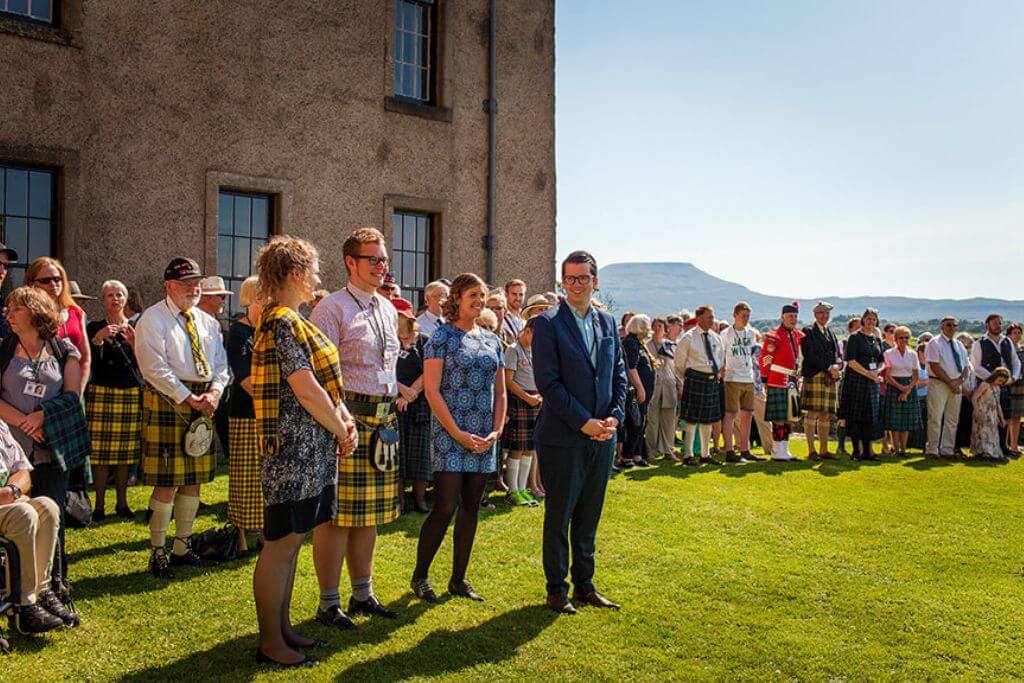
The MacLeods of Lewis and the MacLeods of Dunvegan, Harris, and Dunelg (sometimes known as the MacLeods of MacLeod) are two branches of the same family that are divided at some point. For more than 800 years, the MacLeods of MacLeod have called Dunvegan Castle home.
This entire situation has a lot in common with the movie “Highlander,” and that is not by mistake. The Dunvegan location served as the backdrop for many of the flashback scenes in the cult sci-fi/history movie about the immortal Connor MacLeod.
2. The history of Dunvegan Castle stretches back to the year 1200
Before the Hebrides became part of Scotland, the castle was probably begun about the year 1200. Dun is a Norse word meaning a fort or stronghold. Around about 1300, it was surrounded by a curtain wall that climbed straight up from a large rocky boulder beside Dunvegan Loch.
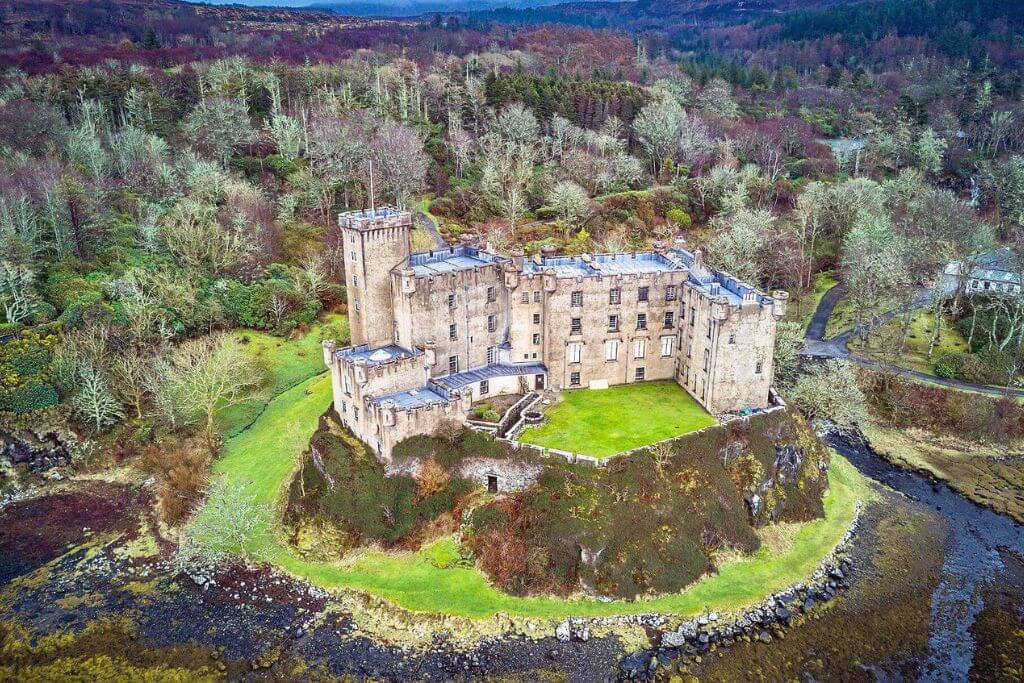
The house features representations of at least ten different architectural types. As the demands of the clan changed throughout the years, other structures and architectural styles were built, and it eventually became a collection of these.
3. Presently, the castle looks cohesive thanks to five independent buildings encased in a Victorian shell
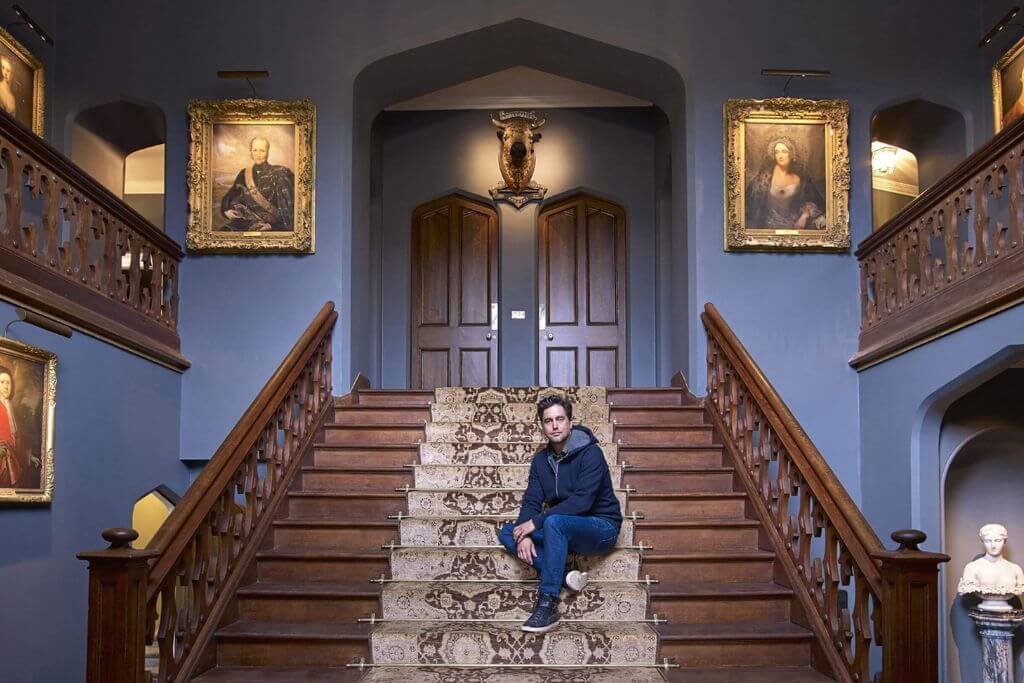
Nowadays, the castle consists of five different structures that are encased in a Victorian shell, giving it a uniform appearance. Many of the towers, often termed “pepper pots,” were constructed during the Victorian period and are simply decorative.
4. There are several activities available to visitors at Dunvegan Castle, both inside and outside.
One can have a tour of the Dunvegan Castle while there. The 27th MacLeod of MacLeod beautifully renovated Dunvegan between 1840 and 1850 into what it is today (a traditional name for the clan chief).

You can explore the castle’s five distinct buildings, each representing a different historical era. Every day long, guided tours depart from the entrance hall.
You shouldn’t be startled if you’re asked to wait before starting your tour because they are timed to keep the castle from getting too crowded. You can also use the Dunvegan Castle guidebook to lead yourself. It draws attention to both clan stories and historical paintings.
5. Anyone who visits Dunvegan Castle might search for the castle’s riches
There are two that are intimately interwoven with the history and the mythology of the MacLeods of MacLeod. An extremely old silk banner known as the Fairy Flag was likely produced in Syria and brought back after the Crusades.
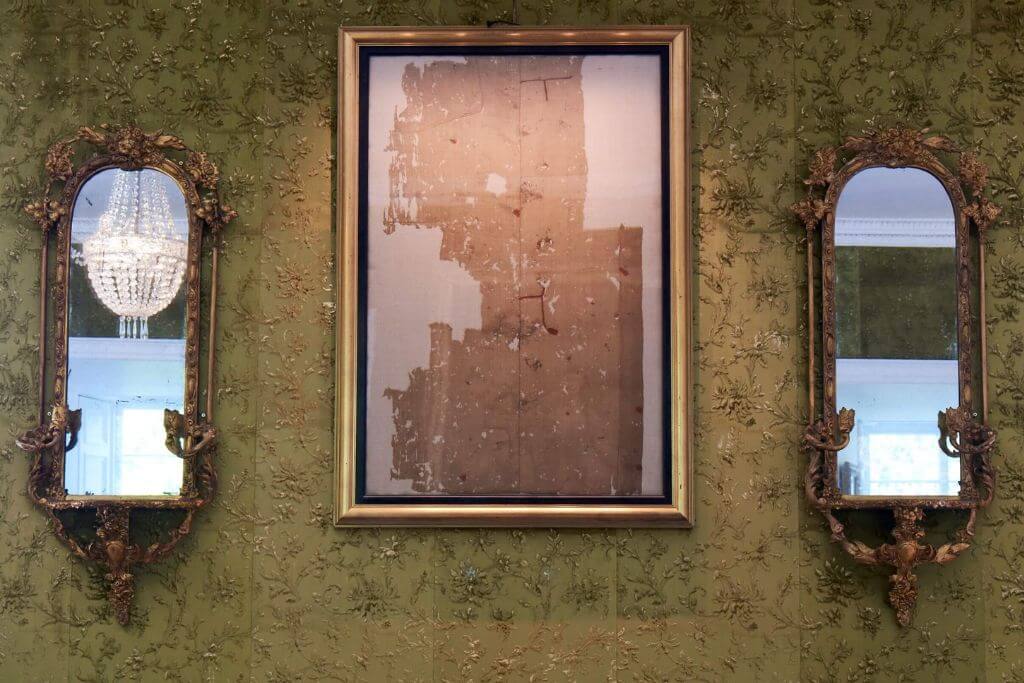
Alternately, it might have been the Viking King Harald Hardrada’s war banner (killed in 1066). On the other side, the MacLeods like to claim that an ancestor received it from the fairies. The drinking horn of Ruairidh Mor is another well-known treasure.
By the way, that’s Scots Gaelic Rory. Every new clan head is required to consume the entire horn of wine in one swallow as a test of their manhood, per family custom. The horn originally held two imperial pints (1.2 U.S. quarts). Over time, the horn has been inexplicably filled in quite a bit, making the achievement somewhat less terrifying.
6. You’ll be excited to visit the Gardens at Dunvegan Castle
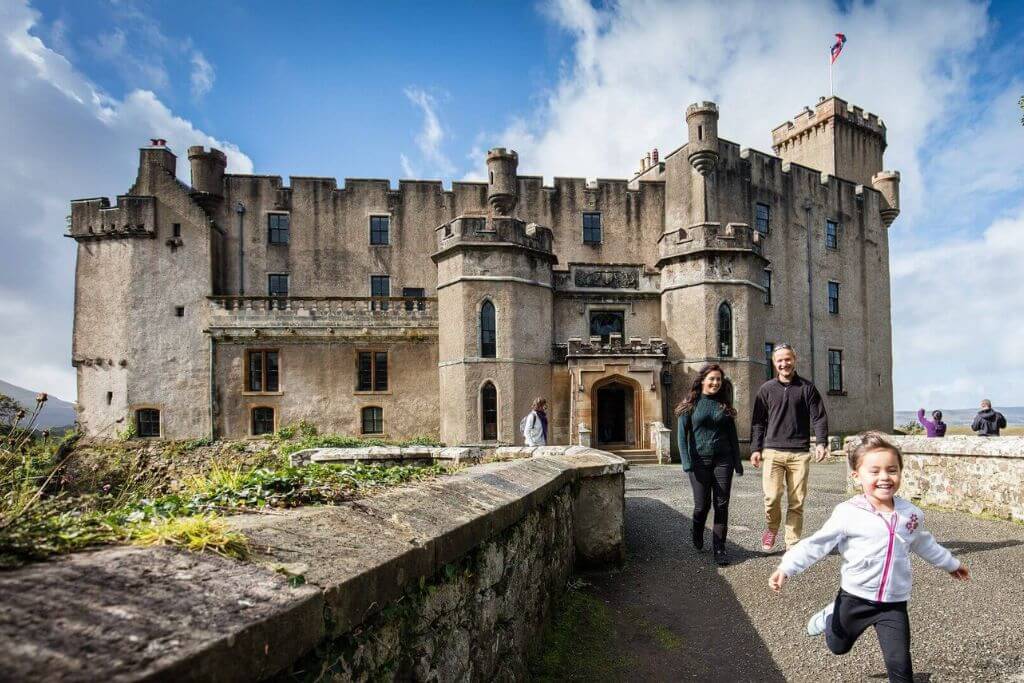
Five acres of grounds encircle the castle. In 1978, they were planted in style similar to older gardens made in the 18th century. See the rose garden, water garden, and walled garden, all examples of gardens that have triumphed over the elements.
7. A memorable experience at Dunvegan Castle will be getting up close to the seals
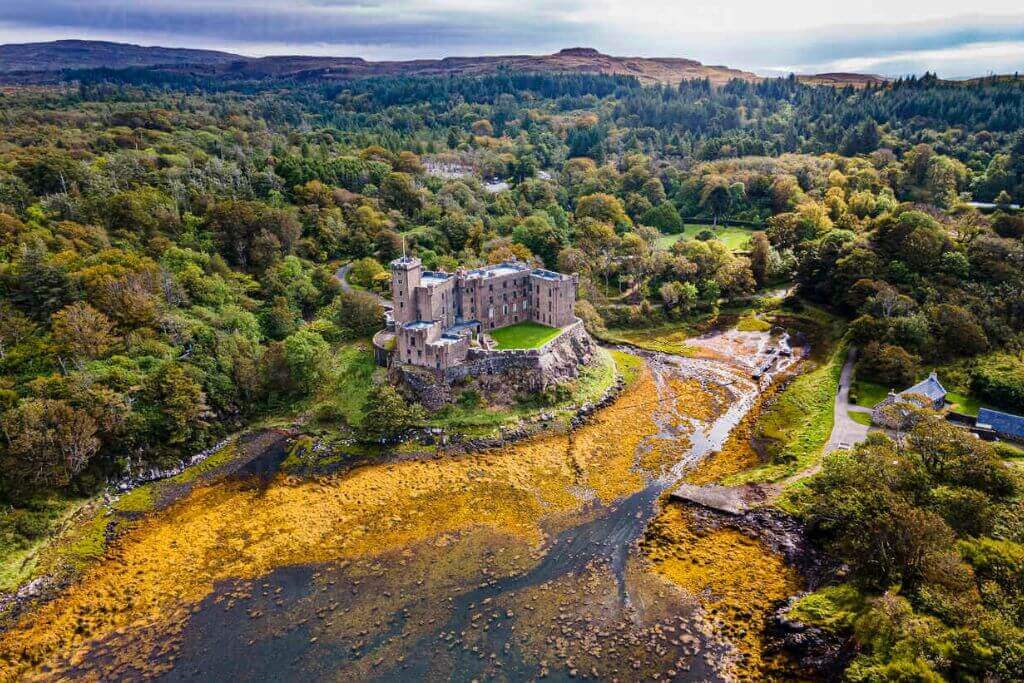
You may travel to the estate’s seal colony on a 25-minute voyage in a traditional clinker-built boat from April through September. Herons and sea eagles that are nesting might also be seen. Weather and sea conditions allow two-hour fishing excursions, and loch cruises for up to four individuals are also offered.
8. Around a mile separates Dunvegan Castle from Dunvegan Village
On the Isle of Skye, off the west coast of Scotland, Dunvegan Castle is situated one mile (1.6 km) to the north. The MacLeod of MacLeod, leader of the Clan MacLeod, resides there. Supposedly a fortified location from the earliest ages, the castle was first built in the 13th century and developed piecemeal throughout the decades.
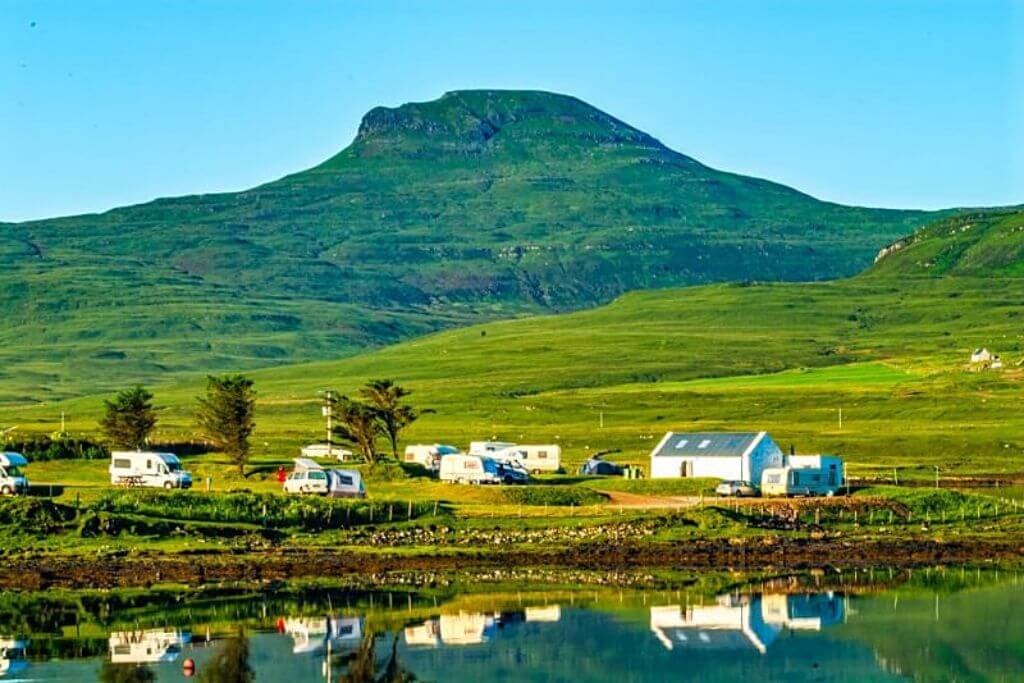
The entire structure had a mock-medieval rebuild in the 19th century. The castle is situated atop a rocky outcrop overlooking an inlet on Lake Dunvegan’s eastern shore. Jack Joseph Anderson’s image is from Wikimedia Commons.
On the Isle of Skye’s Northwest Coast, a mile separates the castle from Dunvegan village. Set your satellite navigation system to the Kyle of Lochalsh if you’re driving.
From there, cross the Skye Bridge to the island. A 45-minute drive will get you to Dunvegan. Although the surrounding countryside is breathtaking, some of the roads are quite nerve-wracking.
9. When touring the castle, you might likewise take a coach tour
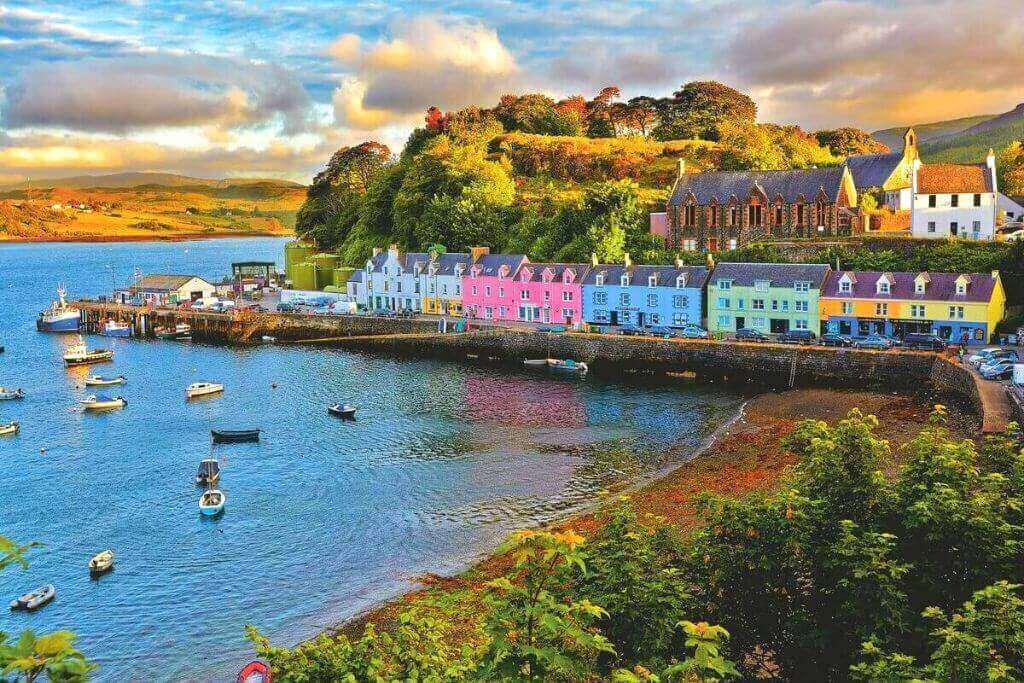
Dunvegan Castle is a stop on Skye Tours’ Fairy Dust Trail tour departing from Portree. The official tourism website, Isle of Skye.com, also provides a list of many coach and minibus tour providers that travel to Dunvegan.
10. The Dunvegan castle necessities are important for making notes
The Dunvegan castle is open from 10:00 a.m. to 5:30 p.m. Three stores selling Scottish items, mementos, the MacLeod brand, single malt whisky, a particular children’s castle, garden tours, and baby changing stations are among the castle’s amenities.
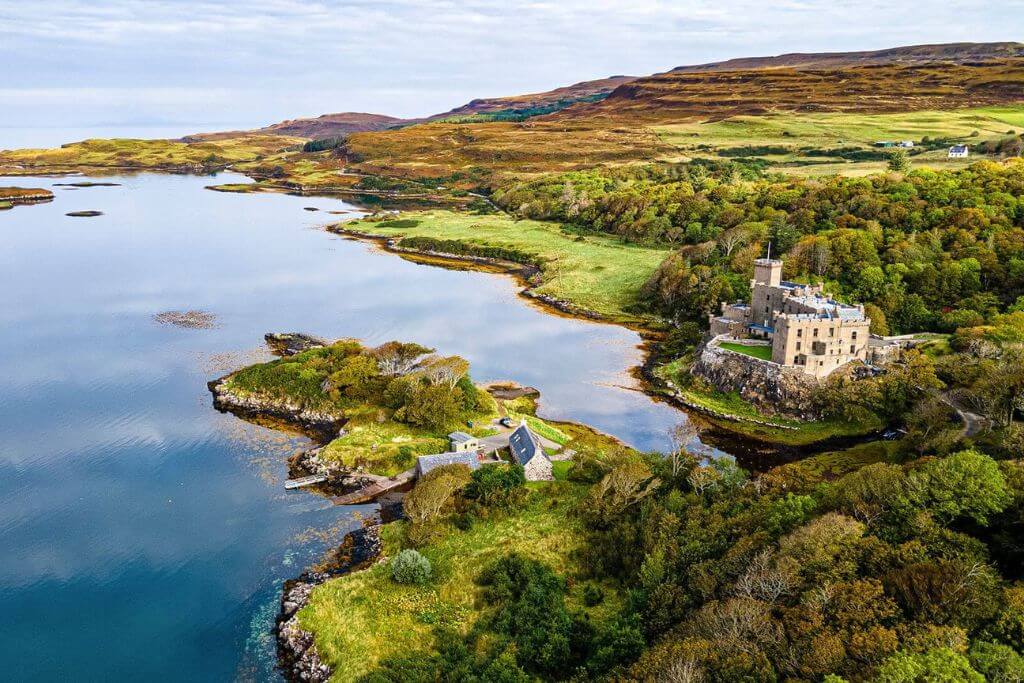
As of 2019, adults had to pay 14 pounds to enter the castle. There are also plenty of tickets available for families, seniors, kids, and students. You must be prepared to pay additional fees on top of your entry fee if you want to go on seal tours, fishing trips, or loch cruises.
